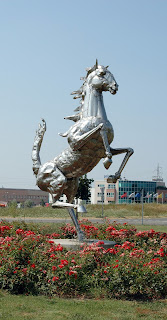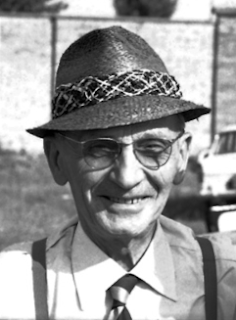News vendor who started football sticker craze
 |
| The Mexico 1970 World Cup album can sell for thousands of pounds at auction |
Since the stickers’ first appearance in Italy in the 1960s and the first World Cup sticker album in 1970 took the concept into an international marketplace, Panini has grown into a publishing company that in 2017 generated sales in excess of €536 million ($643 million US) in more than 120 countries, employing more than 1000 people worldwide.
Panini, who died in 1996, grew immensely wealthy as a result, selling the business in 1989 for a sum said to be around £96 million, the equivalent of £232 million (€266 million; $303 million US) today, after which he spent the remaining years of his life building on an already established reputation for philanthropy.
He came from humble working-class origins and left school at the age of 11. His father, Antonio, worked at the military academy in the city of Modena, about 16km (10 miles) away from their village. Life changed for the family, however, when in 1945 they acquired the license to operate the popular newsstand near the cathedral in the centre of the city.
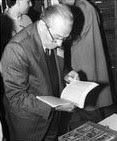 |
| Giuseppe Panini anticipated what a success football stickers would become |
While working at the newsstand, they noticed that the picture cards that some publishers gave away with their papers and magazines were always popular. When they came across a large number of cards depicting flowers and plants that had been left over from a series given away with a popular magazine, they bought them all and hit upon the idea of selling them as a stand-alone product, in packets of two at 10 lire per packet.
Incredibly, they sold three million packets and in 1961 Giuseppe decided there was a demand it would be foolish not to try to meet. He rented a small workshop in Via Castelmaraldo in Modena and the Panini brothers began printing their own cards, not of plants and flowers but of footballers. They were the same size as the miniature pictures of saints that were popular at the time.
The first ones were just plain cards - self-adhesive stickers would follow later - but they were hugely popular, nonetheless. In the first year alone, the number of packets sold reached a staggering 15 million, almost doubling the following year and in 1964 Panini acquired the publishing plant in Viale Emilio Po, which is still the company’s headquarters today.
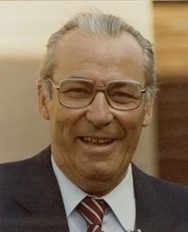 |
| Giuseppe Panini turned the family business into a worldwide success |
It was a successful venture but because of the European trading laws, the market that turned out to be among the biggest of them all - in the United Kingdom - was not cracked until 1978, when the sticker album for the World Cup in Argentina hit the newsstands.
In typical Italian fashion, Giuseppe Panini made sure he looked after his family, employing not only Benito but his other brothers, Franco and Umberto, and his sisters Veronica, Maria and Norma. His mother, Olga, and his wife, also called Maria, were also involved.
He was also determined to put money into the local community in Modena.
In 1966, he bought the local volleyball team Modena Volley, which for a while was one of the biggest volleyball clubs in the world. In 1973 he founded the Italian Volleyball League - won 12 times by his own club - of which he was president for eight years.
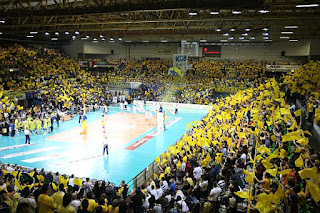 |
| Modena's Palazzo dello Sport is also known as PalaPanini |
Shortly before his death he donated his photographic collections to the city. The local authority subsequently dedicated the city’s Palazzo dello Sport athletic facility to him as well as two museums to show off his collection - the Fotomuseo Giuseppe Panini and the Museo della Figurina.
Ironically, the sale of the company in 1989 - to the British-based publisher Robert Maxwell - almost brought about its demise. A period of poor management saw Panini miss out to rivals Merlin on the lucrative contract to publish sticker albums on behalf of the new English Premier League and after Maxwell died in 1991, leaving behind a mountain of debt, the company survived only after an investment consortium bought it out of administration.
The company was returned to profitability and the albums for recent World Cups have been among the most successful. Past albums, meanwhile, remain highly collectible - none more so than the first one.
Indeed, such is the rarity of completed 1970 World Cup albums today that one sold at auction in 2017 for £10,450 (€12,012; $13,653 US).
| The Ferrari headquarters at Maranello |
The village of Pozzo is a short distance from Maranello, famous as the headquarters of Ferrari, which has an extraordinary museum in which visitors can explore the history of the world’s most famous sports cars. Pozzo itself, which has a population of a little under 2,500, is home to the Villa Rangoni-Machiavelli - also known as the Villa Bice - which houses sculptures belonging to the Severi contemporary art collection.
 |
| Modena's 11th century cathedral |
The historic city of Modena has a magnificent main square, Piazza Grande, where visitors can find the 11th century Duomo (cathedral) dedicated to San Geminiano, which is now a Unesco world heritage site. The city’s opera house was renamed Teatro Communale Luciano Pavarotti in 2007 after the great tenor, who was born in the city, as was the soprano Mirella Freni. Modena is also famous for its balsamic vinegar, Aceto Balsamico di Modena.
More reading:
How Giacinto Facchetti led Italy to the 1970 World Cup final
Vittorio Pozzo - Italy's double World Cup winner
Enzo Ferrari - the man behind the legend
Also on this day:
1383: The birth of professional soldier Niccolò III d'Este
1877: The birth of Enrico De Nicolo, Italy's first president
1974: The birth of footballer Alessandro del Piero
Home



